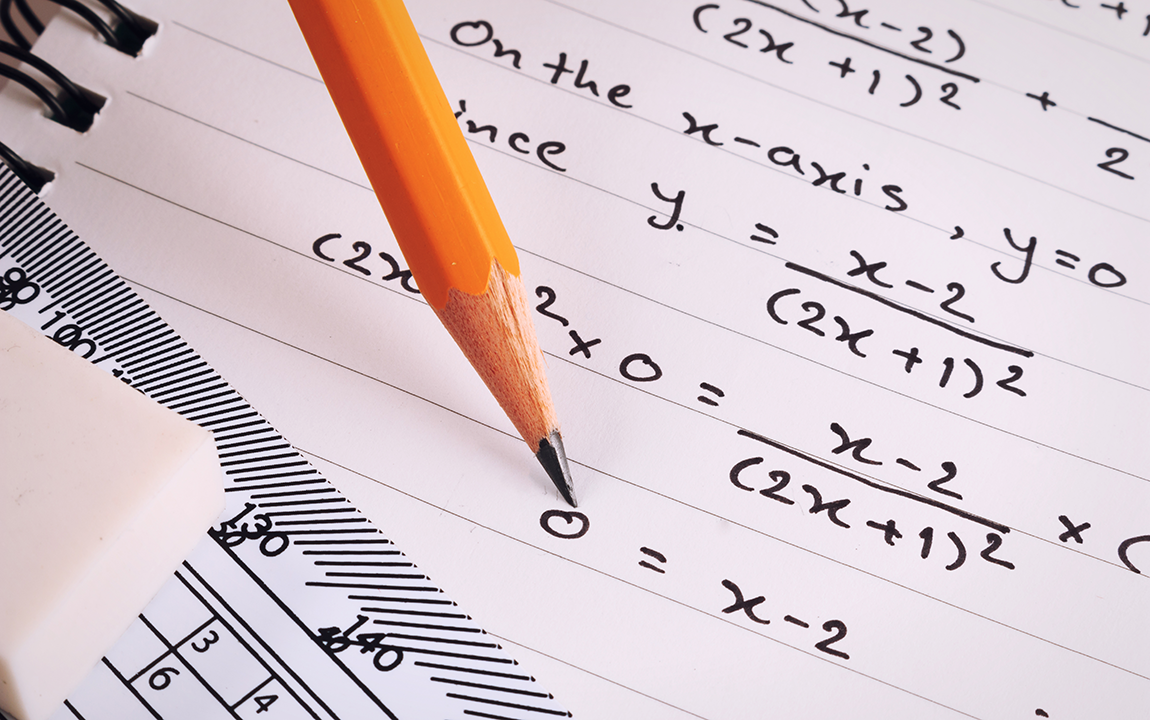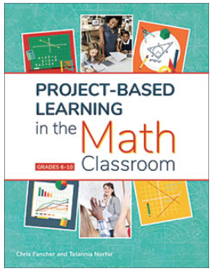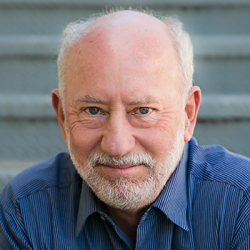
Math teachers, especially at the secondary level, often find it a challenge to wrap their heads around how Project Based Learning could work in their classroom. We’ve heard questions and concerns such as:
“Students need to learn how to do the math before they can apply it in projects. They can’t learn it all through inquiry.”
“It’s hard to find real-world applications of some concepts and operations in math.”
These are legitimate concerns, and there is debate in the math world about how and what should be taught in the K-12 system. Many math teachers feel the pressure to raise test scores or need to follow district-mandated programs and textbooks. They haven't seen many models of PBL for math, and were not taught that way themselves. They may have heard about projects in which the math was lightweight. They may have heard things from PBL advocates that make it seem like it should be all-PBL, all the time. Teachers and school/district leaders need to agree on the vision for the use of PBL in math, and create the conditions that will allow to teachers to design and conduct high-quality projects.
Here's PBLWorks' general advice on PBL and math, especially for teachers new to it.
- Do shorter projects that are well-aligned with standards. Focus on important standards, ones that call for deeper mathematical thinking/understanding. Some standards may not be best taught via PBL, e.g., those that involve simply memorizing information.
- There is a place for math-only projects, and a place for occasional interdisciplinary projects.
- You don’t need to teach everything via PBL; start with, say, two projects per year, then you’ll see how it can work.
- Consider using more of a problem-based approach to projects, which can be performance tasks or simulations. They can still have all the Gold Standard PBL project design elements to some extent, although they may not have all the features of more elaborate PBL units, such as tangible products, formal presentations, or community action.
- Talk with people who use math in their work to find ideas for projects, contact community members, organizations, and businesses who could act as clients, or look for real-world needs or problems that could be addressed with the help of math.
Important Note: Some of the issues around math and PBL raises questions about the way we teach math generally, which is a systemic-level decision beyond most individual teachers' classrooms—more on that below.
New Book by and for Math Teachers
Now there’s a new book that addresses the above concerns by providing very helpful and specific guidance, written by two math teachers in the PBLWorks National Faculty: Project-Based Learning in the Math Classroom, Grades 6-10, (Prufrock Press, 2019), by Chris Fancher and Telannia Norfar. (Btw, the video of Telannia's "Finance Project" is on the additional resources li st below.)
st below.)
This book strikes me as different from most other publications on math and PBL because it’s so practical and detailed. It’s not a discussion of the theory of PBL in math, with a few brief examples. Instead, the authors briefly give a rationale for “changing the structure of the mathematics classroom”--because today’s standards emphasize mathematical thinking--then jump right into a simulated experience of a math project.
The reader is encouraged to complete the simulation with colleagues, to learn how three days in a geometry project unfold from the point of view of the student and the teacher. Included are a transcript of what the teacher says, step-by-step directions, and a set of handouts for students to use. Getting an up-close look at how the teacher guides student inquiry in math is something I’ve never seen before, and I think it will be eye-opening for many.
In the next chapters, Fancher and Norfar explain in detail how to design a project-based unit, or a “task” which is more limited in length and complexity. They offer several “key teaching strategies” for the math classroom, many of which could be used to build mathematical thinking generally, such as Socratic seminars, the workshop and “5E” model, and journaling. They devote an entire chapter to making the case for having students collaborate when learning math, with several tools teachers can directly use for coaching and managing teams.
The second half of the 155-page (plus appendix) book contains examples, including a complete PBL unit for high school with a project calendar, student handouts, and assessments, plus six “inquiry-based tasks” and five more projects—all of which were actually conducted in the authors’ classrooms.
I look forward to hearing feedback from math teachers as this book reaches its audience (and invite them to write guest blog posts about their experiences with PBL in math!).
Additional books & blog posts on PBL in math, and sources of math projects
Check out more recommended resources below, which is by no means a comprehensive list. Some of the authors get into the wider issue of how we teach math in the U.S. and many other countries--which resonates with me as someone who didn’t do all that well in math after 6th grade; even high achievers would benefit from learning math via PBL. If you have more suggestions for resources on PBL and math please share them on Twitter and Facebook @pblworks.org.
Sources of Math Projects:
- Math Projects at PBLWorks.org; 16 projects from various K-12 grade levels.
- Performance Task Databank, Stanford Center for Assessment, Learning and Equity (SCALE): This site has a comprehensive, well-curated collection of hundreds of high-quality tasks and projects for all subject areas and grade levels.
- Mathalicious, which has over a hundred real-world math mini-projects for middle and high school teachers.
Examples:
- The Finance Project: 7-minute video with 11th grade pre-calculus teacher Telannia Norfar.
- Computational Thinking & Social Justice Projects, on Edutopia.
- 8th Grade Math Project: How Much Does Your Shirt Really Cost?, guest blog post on PBLWorks.
How-To & Visionary:
- Project Based Learning in Math Class: Easier Than You Think, by Ross Cooper.
- Project-Based Learning in the Secondary Math Classroom? YES!, by Carolyn Marchetti
- Mathematical Mindsets: Unleashing Students' Potential through Creative Math, Inspiring Messages and Innovative Teaching, (Jossey-Bass 2015) by Jo Boaler, a noted advocate for progressive approaches to math teaching and researcher on PBL and math.
- Rigor, Relevance, Relationships: Making Mathematics Come Alive with Project-Based Learning, National Council of Teachers of Mathematics, 2018 (Chapter One is free to read, a good overview of PBL in math).
- Bad Bargain: Why We Still Ask Kids to Factor Polynomials and How We Fix It, by Tom Vander Ark.
Do you have more suggestions for resources on PBL and math? Please share them on Twitter and Facebook @pblworks.org.

